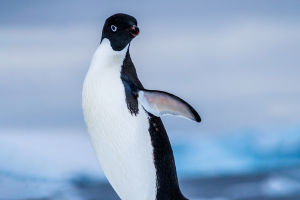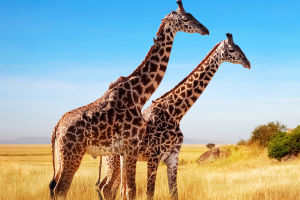In nature, the smallest birds are remarkable not only for their diminutive size but also for their exquisite appearance and unique lifestyle.
These tiny avians exhibit extraordinary abilities in adapting to their environments, foraging, and reproducing, showcasing the remarkable diversity and adaptability of avian life.
Here, Lykkers, provides an in-depth look at several of the smallest birds in the world, focusing on their characteristics, habitats, and behaviors.
First among the smallest birds is the hummingbird. Hummingbirds, belonging to the Trochilidae family, are renowned for their diminutive size. Typically, these birds measure between 5 and 6 centimeters in length and weigh approximately 1.6 to 1.8 grams.
The name "hummingbird" derives from the humming sound made by their rapidly vibrating wings, which is reminiscent of a bee’s buzz. Hummingbirds are famous for their vibrant plumage and their ability to hover in mid-air while feeding.
They primarily consume nectar from flowers but also feed on small insects. Their size is so minuscule that their skeletal remains rarely appear in the fossil record, leaving much of their evolutionary history shrouded in mystery.
Next is the Broad-billed Warbler, a very small bird native to Australia. This warbler, one of the smallest bird species in the country, has a body length of about 8 to 10 centimeters.
The Broad-billed Warbler is notable for its broad, sturdy bill, which is well-suited for catching insects and other small prey. Its small size and adaptable nature allow it to thrive in a variety of habitats, including forests, bushlands, and open grasslands.
Another small bird is the Brown-headed Nosey Warbler. Found mainly on the east coast of Australia, this small passerine measures between 9 and 11 centimeters in length and weighs between 5 and 6 grams.
Despite its size, the Brown-headed Nosey Warbler is remarkably resilient. It inhabits tall grasses, reeds, and rice fields, displaying a secretive behavior and often engaging in undulating flight patterns. During the breeding season, males emit a piercing call to attract mates and establish territory.
The Golden-headed Fantail Warbler is another example of a small bird, with a body length ranging from 9 to 11 centimeters. This warbler is distinguished by its brown vertical stripes and its preference for high grass, reeds, and rice fields.
Its flight is characterized by a distinctive undulating pattern. During courtship and territorial disputes, male Golden-headed Fantail Warblers produce sharp "buzz" sounds and running "plook" noises, which are crucial for communication and mate attraction.
The Golden Crowned Goldfinch, predominantly found in Europe, is a small bird with a length of 8 to 9 centimeters and a weight of 5 to 7 grams. This species is known for its cold resistance, as it inhabits environments that include harsh winter conditions.
The Golden Crowned Goldfinch frequents forests and bush areas, feeding on insects and plant seeds. Its brightly colored feathers provide effective camouflage in its natural habitat.
The Goldfinch is a slightly larger small bird, measuring between 9 and 12 centimeters in length and weighing 8 to 12 grams. It is characterized by its thin, straight, and pointed beak with a thick base. The Goldfinch primarily feeds on fruits, seeds, grass seeds, and grains.
It is found across various regions, including Sakhalin Island, the Kamchatka Peninsula, Japan, and North Korea. Goldfinches demonstrate a high degree of adaptability to different habitats, allowing them to find food in diverse environments.
The Banana Warbler, measuring between 7 and 12 centimeters in length and weighing approximately 5.5 to 19 grams, is another small bird species.
Noted for its sharp, curved beak, the Banana Warbler feeds mainly on nectar, but also consumes insects and fruit. It constructs its nests from banana leaf fibers, creating dome-shaped nests that offer a secure environment for its eggs and chicks.
Tropical Warblers are a group of small insectivorous birds found in forested regions stretching from northern Canada to Argentina. These warblers measure between 11 and 12 centimeters in length and are recognized for their bright colors and varied behaviors. They primarily feed on insects and have adapted to a range of forest environments, demonstrating impressive survival skills.
These diminutive avians illustrate the incredible diversity and ingenuity of nature. By understanding and protecting their habitats, we can better appreciate and preserve these extraordinary birds, ensuring that their beauty and ecological roles continue to enrich our world.


